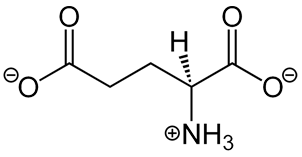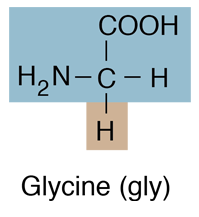Important Neurotransmitters
While there is an abundance of chemical species which play the role of a neurotransmitter in specific settings, there a few including acetylcholine that play major roles in human physiology.
Epinephrine
Epinephrine, also called adrenaline, is produced by the adrenal glands located above the kidneys. This neurotransmitter is responsible for your body's "fight or flight" response. Once released, it works throughout the central nervous system to increase heartrate and bring extra oxygen to your muscles quickly. It is part of your body's defense against stress, speeding up your breathing and contributing to alertness.
Norepinephrine
Norepinephrine, also called noradrenaline, has the general function of mobilizing the brain and body for action. Its release is lowest during sleep, rises during wakefulness, and reaches much higher levels in situations of stress or danger (fight or flight response). In the brain, norepinephrine increases arousal and alertness, promotes vigilance, enhances formation and retrieval of memory, and focuses attention. It also increases restlessness and anxiety. In the rest of the body, norepinephrine increases heart rate and blood pressure, triggers the release of glucose from energy stores, increases blood flow to skeletal muscle, reduces blood flow to the gastrointestinal system, and inhibits voiding of the bladder. These bodily effects are characteristic of the sympathetic nervous system and norephinephrine is the main neurotransmitter used by that system. Sympathetic activation of the adrenal glands causes the part called the adrenal medulla to release norepinephrine (as well as epinephrine) into the bloodstream, from which, functioning as a hormone, it gains further access to a wide variety of tissues.
 | |
Dopamine
Dopamine is considered in popular culture as the pleasure drug, but the pharmacological opinion is that in the central nervous system it confers motivational salience, signaling the desirability or aversiveness of and outcome and propelling one's behavior toward or away from that outcome. Outside the central nervous system it functions as a messenger. "In blood vessels, it inhibits norepinephrine release and acts as a vasodilator (at normal concentrations); in the kidneys, it increases sodium excretion and urine output; in the pancreas, it reduces insulin production; in the digestive system, it reduces gastrointestinal motility and protects intestinal mucosa; and in the immune system, it reduces the activity of lymphocytes."(Wiki) There is much discussion of dopamine in relation to drug addictions. Cocaine, methamphetamine, and other addictive drugs are seen as inhibiting the re-uptake of dopamine, leading to high dopamine levels in the brain and to many of the manifestations of drug addiction.
 | |
Serotonin
Serotonin is a neurotransmitter for which the "biological function is complex and multifaceted, modulating mood, cognition, reward, learning, memory, and numerous physiological processes such as vomiting and vasoconstriction." About 90% of the body's serotonin is located in the gastrointensinal tract where it regulates intestinal movements. About 8% of it is found in blood platelets and 1-2% in the central nervous system. Functions in the CNS include the regulation of mood, appetite, and sleep. It also has some cognitive functions, including memory and learning.
 | Serotonin is sometimes called the "calming chemical" and is known for its mood modulating effects. A lack of serotonin has been linked to depression and related neuropsychiatric disorders. |
Glutamate
Glutamate is common in a normal diet. Glutamate is present in 90 percent of synapses, acting as the main excitatory neurotransmitter in the central nervous system. Too much glutamate can over-excite brain cells, but this is typically controlled by glutamate transporter molecules that collect the excess glutamate in the cell's environment. Glutamate is important to neuroplasticity, the capacity of the brain to rewire neural connections for new tasks. This helps us to learn and reinforces our memory.
 | Glutamate is the negative ion form of glutamic acid. It is synthesized from the amino acid glutamine in the central nervous system. Glutamate is used in the synthesis of GABA. |
Glycine
Glycine is an inhibitory neurotransmitter in the central nervous system, especially in the spinal cord, brainstem, and retina. When glycine receptors are activated, chloride enters the neuron via ionotropic receptors, causing an inhibitory postsynaptic potential (IPSP).
 | Glycine is one of the 20 amino acids used by the body. "Glycine is used for treating schizophrenia, stroke, benign prostatic hyperplasia (BPH), and some rare inherited metabolic disorders. It is also used to protect kidneys from the harmful side effects of certain drugs used after organ transplantation as well as the liver from harmful effects of alcohol."rxlist |
g-Aminobutiric acid (GABA)
GABA is the chief inhibitory neurotransmitter in the developmentally mature mammalian central nervous system. Its principal role is reducing neuronal excitability throughout the nervous system. It is sometimes called the "learning chemical"; studies have found a link between the levels of GABA and whether or not learning is successful. GABA is sold as a dietary supplement.
 | GABA is primarily synthesized from glutamate. The process converts glutamate (the principal excitatory neurotransmitter) into GABA (the principal inhibitory neurotransmitter). |
|
Index
Bioelectricty
Sciencedirect
PowerOn PowerOff |








